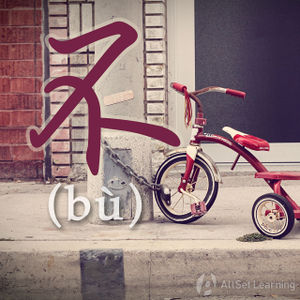Difference between revisions of "Negative commands with "buyao""
| Line 19: | Line 19: | ||
<div class="liju"> | <div class="liju"> | ||
| − | * <em>不要</em> 打 | + | * <em>不要</em> 打 我 ! <span class="pinyin"><em>Bùyào</em> dǎ wǒ!</span> <span class="trans">Don't hit me!</span> |
| − | * <em>不要</em> | + | * <em>不要</em> 说话 ! <span class="pinyin"><em>Bùyào</em> shuōhuà!</span> <span class="trans">Don't talk!</span> |
| − | * <em>不要</em> 吃 很 多 | + | * <em>不要</em> 吃 很 多 肉 。 <span class="pinyin"><em>Bùyào</em> chī hěn duō ròu.</span> <span class="trans">Don't eat a lot of meat.</span> |
| − | * 小 孩子 <em>不要</em> 喝 | + | * 小 孩子 <em>不要</em> 喝 酒 。 <span class="pinyin">Xiǎo háizi <em>bùyào</em> hē jiǔ.</span> <span class="trans">Small kids doesn't want to drink alcohol.</span> |
| − | * <em>不要</em> | + | * <em>不要</em> 生气 , 好吗 ? <span class="pinyin"><em>Bùyào</em> shēngqì, hǎo ma?</span> <span class="trans">Don't get angry, OK?</span> |
| − | * <em>不要</em> | + | * <em>不要</em> 哭 ! <span class="pinyin"><em>Bùyào</em> kū!</span> <span class="trans">Don't cry!</span> |
| − | * <em>不要</em> | + | * <em>不要</em> 出门 。 <span class="pinyin"><em>Bùyào</em> chūmén.</span> <span class="trans">Don't go out.</span> |
| − | * <em>不要</em> 说 | + | * <em>不要</em> 说 英文 。 <span class="pinyin"><em>Bùyào</em> shuō Yīngwén.</span> <span class="trans">Don't speak English.</span> |
| − | * 晚上 <em>不要</em> 喝 | + | * 晚上 <em>不要</em> 喝 咖啡 。 <span class="pinyin">Wǎnshang <em>bùyào</em> hē kāfēi.</span> <span class="trans">Don't drink coffee at night.</span> |
| − | * <em>不要</em> 离开 | + | * <em>不要</em> 离开 我 ! <span class="pinyin"><em>Bùyào</em> líkāi wǒ!</span> <span class="trans">Don't leave me!</span> |
</div> | </div> | ||
Revision as of 03:16, 14 July 2015
-
Level
-
Similar to
-
Used for
-
Keywords
You can use 不要 (bùyào) to mean "don't". This is similar to the other negative command "别 (bié)".
Note: The pinyin for 不要 is written "bùyào" but pronounced "búyào" due to a tone change rule.
Structure
Negative commands in Chinese ("do not" or "don't") are formed with 不要. Usually the subject is omitted, as in English.
不要 + Verb
Examples
- 不要 打 我 ! Don't hit me!
- 不要 说话 ! Don't talk!
- 不要 吃 很 多 肉 。 Don't eat a lot of meat.
- 小 孩子 不要 喝 酒 。 Small kids doesn't want to drink alcohol.
- 不要 生气 , 好吗 ? Don't get angry, OK?
- 不要 哭 ! Don't cry!
- 不要 出门 。 Don't go out.
- 不要 说 英文 。 Don't speak English.
- 晚上 不要 喝 咖啡 。 Don't drink coffee at night.
- 不要 离开 我 ! Don't leave me!
See also
Sources and Further Reading



